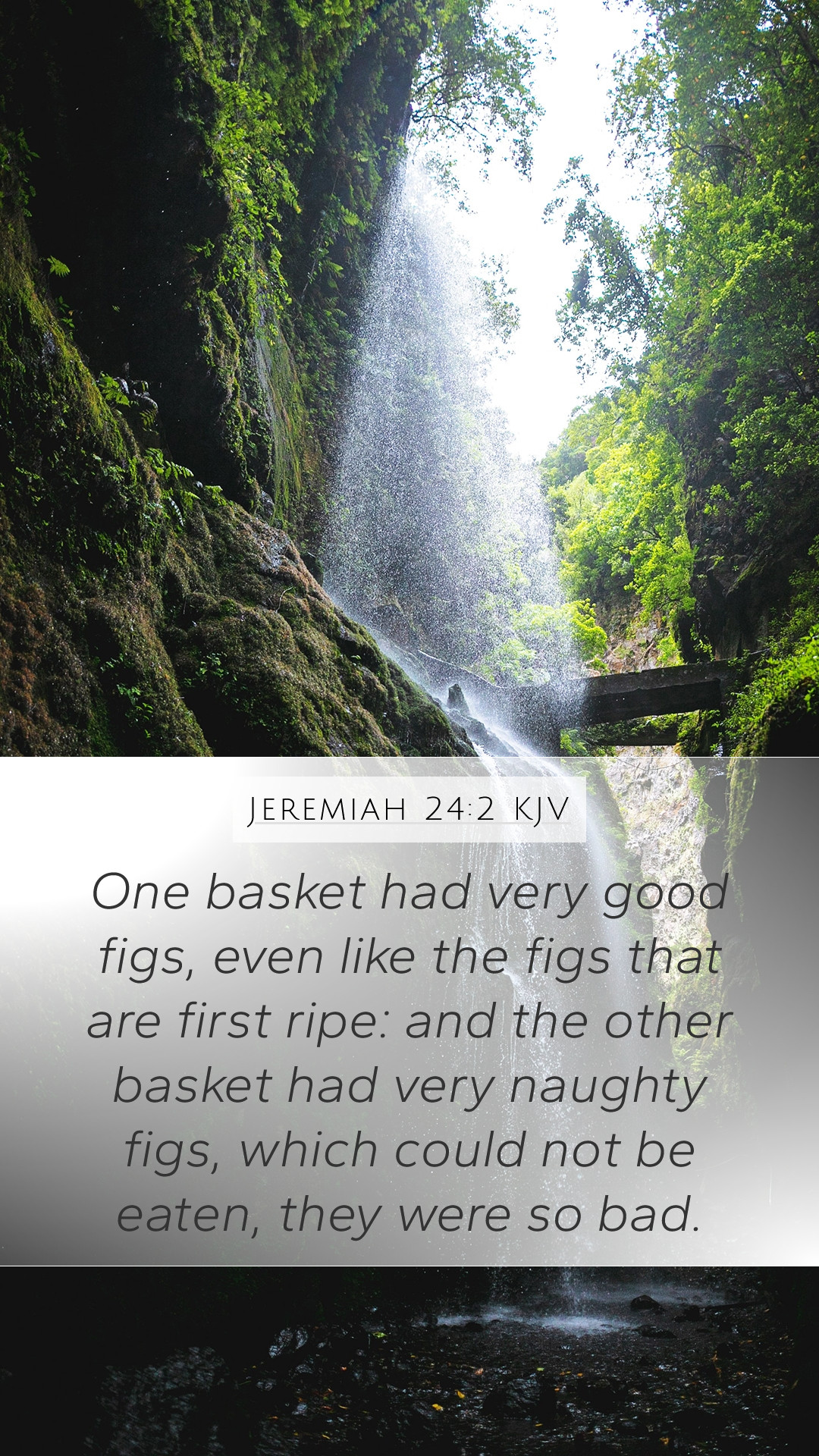Understanding Jeremiah 24:2
Jeremiah 24:2 is a poignant verse in the Book of Jeremiah, providing insight into God's judgment and providence during a tumultuous time for the people of Israel. This verse states, "The Lord showed me, and behold, two baskets of figs were set before the temple of the Lord, after that Nebuchadnezzar king of Babylon had carried away captive Jeconiah the son of Jehoiakim, king of Judah, and the princes of Judah, with the carpenters and smiths of Jerusalem." In this brief but profound visual representation, God communicates vital truths about hope, restoration, and judgment through the metaphor of figs.
Verse Context and Overview
This event occurs at a critical juncture in Israel's history, just after Nebuchadnezzar's conquest and the exile of Jeconiah. Jeremiah, as God's prophet, is tasked with conveying messages reflecting both judgment and mercy. The two baskets of figs symbolize two distinct groups of people: those who will face destruction and those who will be preserved and restored by God.
Biblical Exegesis and Commentary
-
Matthew Henry's Commentary:
Henry interprets this imagery of the two baskets of figs to represent the severed fates of the people of Judah. One basket contains good figs, representing those exiled whom God promises to restore, while the other holds bad figs, a symbol of those who will face impending doom. This distinction serves to illustrate God’s sovereignty and His control over the future of His people.
-
Albert Barnes' Notes:
Barnes emphasizes the historical significance of this vision. He explains that the good figs signify those individuals who will return to Jerusalem and prosper after the exile, highlighting a theme of hope amid despair. The bad figs indicate the disobedient who will suffer the consequences of their actions. This duality teaches about the consequences of faithfulness versus rebellion against God’s commands.
-
Adam Clarke's Commentary:
Clarke draws attention to the figurative language used in this verse. He expounds on the reasons behind the fig metaphor, noting that figs were a common fruit in the region, thereby making the message accessible to the Israelite audience. He interprets the good figs as God’s gracious promise of restoration, while the bad figs represent those destined for judgment, illustrating the broader theme of divine justice and mercy.
Thematic Insights
This verse serves as a focal point for several key themes in biblical theology:
-
Judgment and Mercy:
Jeremiah 24:2 allows readers to explore the dual nature of God’s interaction with humanity—administering judgment while simultaneously offering mercy and hope to the repentant.
-
Restoration:
The promise of restoration for the good figs symbolizes God's enduring covenant with His people, assuring them that even in exile, there remains a path to forgiveness and renewal.
-
Symbolism in Scripture:
The use of figs is significant as it heralds broader implications within biblical texts, inviting deeper reflection on the use of agriculture as God’s means of communication and teaching.
Application to Daily Life
In applying Jeremiah 24:2 to contemporary life, believers are encouraged to reflect on their responses to God’s call. It challenges individuals to examine their standing before God—are they like the good figs, willing to receive restoration and fulfill God’s purposes, or like the bad figs, facing the consequences of their choices?
Additional Cross References
- Jeremiah 29:10-14 - This passage echoes God’s promise to restore Israel after 70 years of exile.
- Isaiah 40:1-2 - A message of comfort and preparation for the return of God’s people.
- Hosea 14:4 - God’s willingness to heal and restore those who turn back to Him.
Conclusion
Jeremiah 24:2 encapsulates a message of hope and judgment, illuminating key biblical truths that resonate with readers seeking deeper understanding and commentary on Scripture. By studying this verse and its surrounding context, individuals can gain immense insight for personal growth, biblical study groups, and online Bible study discussions. Engaging with the text invites believers to explore the transformative power of God’s blessings and reflect on their own spiritual journeys.


